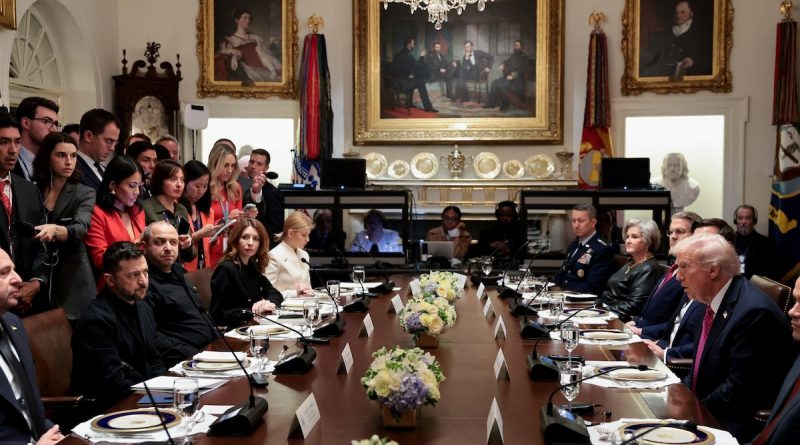Trump and Zelenskiy Talks Signal Renewed Push for Peace and Diplomacy in Ukraine
Washington — The recent meeting between U.S. President Donald Trump and Ukrainian President Volodymyr Zelenskiy at the White House has sparked renewed optimism that diplomacy could once again take center stage in efforts to end the ongoing war between Russia and Ukraine.
While the discussions touched upon military aid, the larger tone of the meeting was one of peace, restraint, and strategic dialogue — marking what could be a significant turning point in the conflict’s trajectory.
President Zelenskiy arrived in Washington with clear objectives — to strengthen Ukraine’s defenses and deepen cooperation with the United States. However, what unfolded during the two-hour conversation was a demonstration of pragmatic diplomacy.
Instead of merely discussing weapons, President Trump emphasized the importance of halting the war, saving lives, and seeking sustainable peace.
“Stop the killing. Stop the war. Let both sides return to their families,” Trump told reporters after the meeting, reflecting a clear desire to pursue negotiations rather than escalation.
His comments underscore a broader U.S. aim to balance support for Ukraine with renewed global peace efforts, signaling that Washington is willing to play a mediating role between Kyiv and Moscow.
Despite initial uncertainty about the tone of the talks, both leaders engaged in open and constructive dialogue. President Zelenskiy, while candid about Ukraine’s military needs, also acknowledged the value of diplomatic channels.
His willingness to remain “realistic” about long-range missiles and to continue dialogue with Trump and European partners highlights a maturing strategy that blends defense readiness with negotiation.
Observers noted that the meeting displayed personal warmth and mutual respect between the two presidents. Trump praised Zelenskiy for his determination and resilience, even complimenting his attire — a gesture that lightened the tone and underscored cordial relations.
For Zelenskiy, the meeting provided an opportunity to reaffirm Ukraine’s commitment to peace while keeping international attention focused on his country’s struggle for sovereignty.
Trump’s decision to re-engage in talks with Russian President Vladimir Putin has also reignited hope for diplomacy. His plan to meet Putin in Hungary in the coming weeks suggests a renewed effort to bring both sides back to the table.
While challenges remain, such engagement represents a chance to revive stalled peace initiatives and encourage dialogue over confrontation.
European officials, too, have cautiously welcomed this development. A spokesperson for the European Union said the bloc “supports all meaningful efforts that can help bring peace to Ukraine,” adding that any genuine dialogue is a step in the right direction.
The meeting has therefore not only strengthened U.S.-Ukraine relations but also inspired a more united international front for diplomacy.
Analysts believe Trump’s peace-driven approach — while unconventional — could create opportunities for breakthroughs that eluded previous negotiations. “It’s not about giving up, it’s about finding a way to stop the suffering,” said one expert, emphasizing that diplomacy remains the most powerful tool in preventing further escalation.
For Ukraine, the meeting represents more than just a political conversation. It symbolizes hope — the hope that through strong leadership, persistent dialogue, and international cooperation, peace can once again become a realistic goal.
While the war’s challenges persist, the renewed focus on peace talks provides a moment of optimism in a region weary of conflict. By engaging both Zelenskiy and Putin, the U.S. is attempting to reset the narrative — from one of division and destruction to one of dialogue and de-escalation.
As both nations continue to assess the outcomes of the White House meeting, one thing remains clear: the path to peace is complex, but every step toward understanding counts.
With Trump’s willingness to mediate and Zelenskiy’s openness to compromise, the world may be witnessing the first signs of diplomatic momentum in a long and painful war.
If successful, these discussions could become a foundation for broader negotiations — transforming confrontation into cooperation and setting the stage for a more stable, peaceful future in Eastern Europe.



